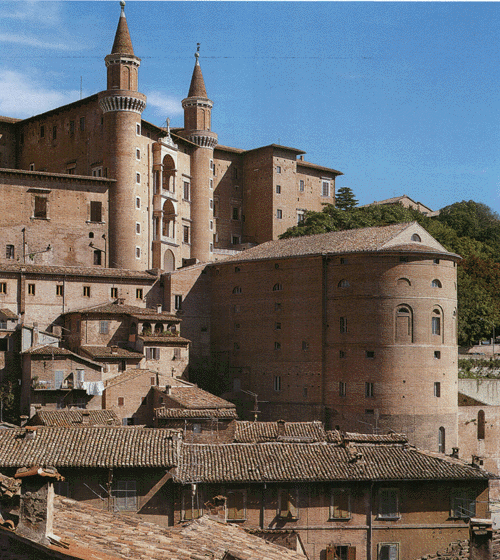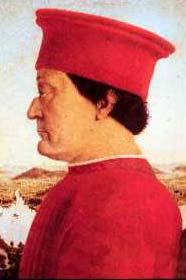

The town almost certainly derives its name from the latin "Urbs bina", meaning
"double town": a name which refers to its situation on two hills.
In the Roman period it became a municipium of some importance
(known as Urbinum Metaurense), as it attested by the archeological
finds preserved in the ducal palace and few remains of town walls and other
buildings of the period.
Upon the fall of the Roman Empire, it was settled
by the Lombards,
then annexed to the Byzantine Exarchate and restored once again to Lombard rule.

|
It was later incorporated in the Pentapolis (together with Fossombrone, Cagli,
Gubbio and Jesi), which was donated to the Church by Charlemagne. |
|
It was Federico da Montefeltro (1444-82) who was
responsible for this significant trasformation, erecting
the magnificent palace
and turning it into a real court, peopled not only by the ducal family itself,
but by the writers and artists that Federico
assembled from all of Europe. |
 |
Besides its remarkable artistic collections, including some of the production of Raffaello Sanzio, who was born and lived here, the exceptional interest of the town of Urbino resides in the fact that its location and history kept its kernel essentially unchanged from 1508 to the present. The walled-in town center is a labirinth of cobblestoned alleys flanked by brick buildings, and, even without the dominating Ducal Palace and Cathedral, would represent a prime example of perfectly preserved Renaissance fortified town.